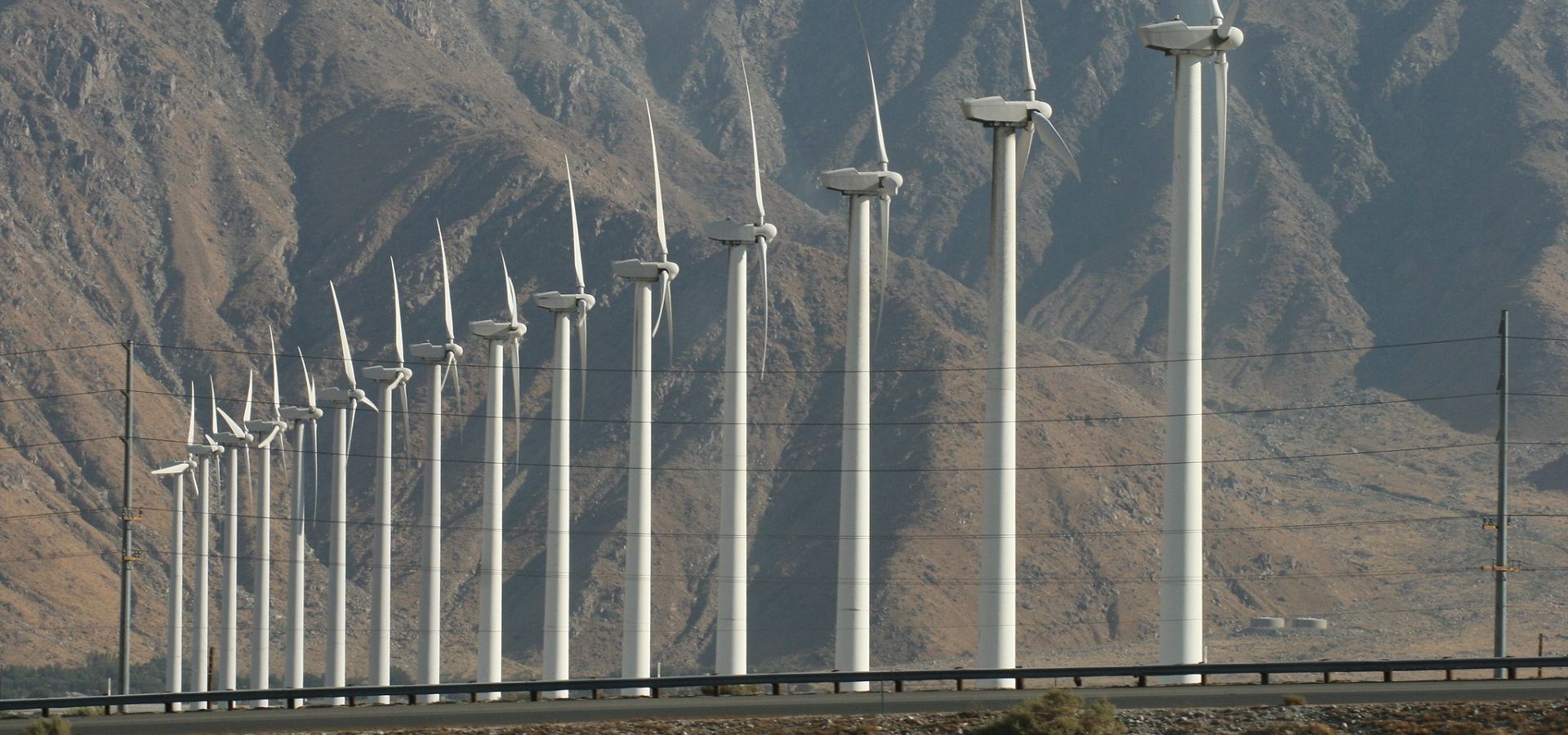Although Trump keeps pushing lumps of coal and tankers full of freedom gas down the world’s collective throats, his industry-friendly administration hasn’t prevented America’s coal industry from dying or its fracking companies from losing piles of money. Nor has he stopped wind from gaining even more traction. After setting growth records last year, another breakthrough is forecast for 2020 as investors pour resources into new waters: offshore wind energy. But fearing its tremendous potential energy capacity, Trump’s minions are ramping up efforts to hold it back. As election fever grips the nation, L. Michael Buchsbaum looks at the state of offshore wind in Part 3 of his series on America’s energy transition.

Wind energy in USA (Quinn Dombrowski ,CC BY-SA 2.0)
Incredible potential offshore
In an update published in December by the U.S. Energy Information Administration (EIA) showing that wind-generation capacity in September hit 100GW nationally –a first—statistics revealed that overall wind’s potential had more than doubled since 2012 (increasing over 300 percent over the past decade). Part of a rapidly accelerating trend, the EIA expected not only an additional 7.2 gigawatts (GW) of wind generation to have come online in December alone, but an additional 14.3GW of capacity to be installed throughout 2020. That means that over the course of roughly a year, another 20 percent will be added throughout the U.S. Going forward, there is an additional 44 GW in advanced development. But the richest winds are only now starting to be tapped.
Off America’s coasts blows a nearly unfathomable wind resource. According to a joint assessment produced over two years ago by the federal Energy and Interior departments, some 10,800 (GW) of wind capacity is just waiting to be harnessed. This translates into roughly 44,000 terawatt-hours (TWh), or something on the order of 14 times current electricity usage nationwide.
Let that sink in. Offshore, using technology now being successfully deployed in Europe, blows enough wind-energy to power 14 United States—sustainably, inexhaustibly, with virtually no emissions and an incredibly reduced environmental impact compared to all fossil-energy alternatives.
While the fracking-obsessed nation has lagged behind in its development of offshore resources, developers hope to rapidly move ahead. After progressive Democratic governors along the Atlantic Ocean committed to carbon-free electricity, now more than 20 gigawatts of wind farms are being planned in federal waters from North Carolina to Maine, bringing with it some $70 billion in investments.
Though the U.S. currently has only one five-turbine offshore wind farm in operation, the Block Island Wind Farm project developed by Danish-major Ørsted, several other projects including the pioneer 800 MW Vineyard Wind along with 14 others are expected to come online by 2026.
Not surprisingly, much of the momentum around offshore wind is being driven by companies with expertise in offshore oil and gas drilling, an advantage that brings a certain uncomfortable synergy. These companies include heavyweights Equinor, the Norwegian oil major formerly known as Statoil and Royal Dutch Shell.
Perhaps because of their own fossil-fuel connections, Trump’s White House has called for increased spending to manage the growth of offshore renewable development. The government’s proposed 2021 budget includes a nearly $5 million budget increase in the Bureau of Ocean Energy Management (BOEM), a division of the Department of the Interior. Though supposedly to be used to increase development and to enhance project reviews, recent bureaucratic actions sadly indicate an opposite tact.
Already Pruning the Vine?
While professing their commitment to offshore wind, Trump’s BOEM in early February ruled to slow down the progress of America’s first large planned offshore wind farm, the 800-MW Vineyard Wind project.
Located 14 miles (23 km) off the coast of Massachusetts, Vineyard has already experienced several delays over concerns that its wind turbines will impact commercial fishing and navigation. The Department of Interior continues to say it needs time to study the impacts of such projects, due to the growing number of offshore wind farms planned for the East Coast. (One open question is to what extent offshore wind will impact marine habitats, especially whales and other endangered mammals).
Despite their supposed interest, as part of Trump’s war on all things progressive, his BOEM pushed their “final” permitting decision to as late as Dec. 18, 2020, delaying the project again more than a year after their previous target date of August 2019. As construction is further halted, “commercial operation in 2022 is no longer expected,” lamented Vineyard Wind Chief Executive Lars Pedersen in a statement.
Vineyard Wind is a joint venture between Copenhagen Infrastructure Partners and Avangrid Inc., the latter of which is part of the Iberdrola Group, the biggest single owner of renewable energy assets globally.
Vineyard Wind had previously agreed to produce electricity for an average price of 8.5 cents per kilowatt hour (kWh) for 20 years, a price that defied most expectations. This comes to about a third of what wind-powered energy costs are Ørsted’s Block Island Wind Farm.
Nearby, two other energy behemoths, Shell and EDP Renovaveis SA, are jointly developing another planned Massachusetts project, the 804-MW Mayflower wind farm. These two companies just stunned the industry by agreeing to sell power for the even-lower price of $58 a MW/h over the life of the contract, $7 per MW/h cheaper than Vineyard.
To the south, New York State in 2018 mandated the offshore buildout of 9,000MW of wind capacity. Last October, the Cuomo Administration signed contracts with two companies, including Equinor, to develop an initial 1,700MW by 2024.
Since it’s clear that the ever-more regressive Trump Administration won’t allow any significant offshore wind energy to come on-line before the November elections, it will be voters who determine what comes next.